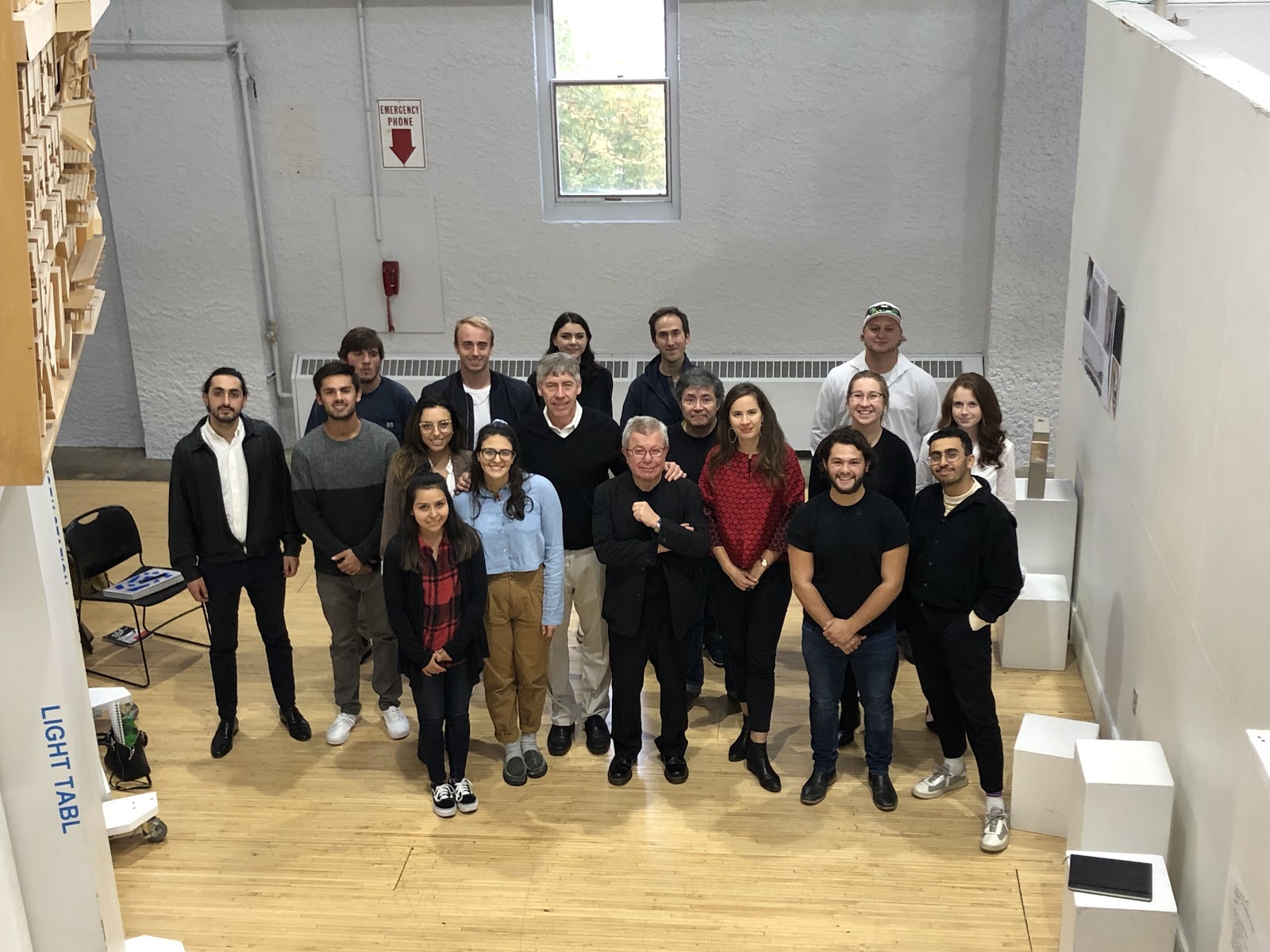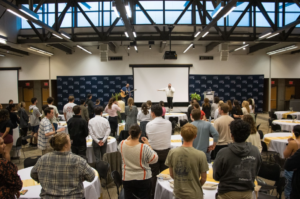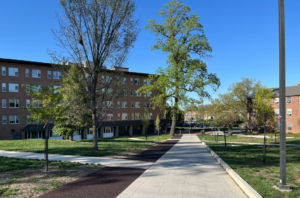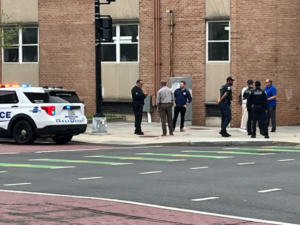Walton Critic: Daniel Libeskind

By Kat Kaderabek
Daniel Libeskind, the architect behind the World Trade Center Master Plan, spent the past week immersed at Catholic University’s architecture school, lecturing and critiquing students’ work. As part of the Walton Critic Lecture Series, Libeskind kicked off his debut at Catholic University with a lecture that students described as “phenomenal.”
Having also designed the Vanke Pavilion in Milan and the Jewish Museum in Berlin, Libeskind told the students that his architecture comes from his fascination with the world around him. He said that architecture and music are intertwined and that time coincides with the eternity of the present. His lecture branched from the realm of architecture at times. Libeskind also discussed the soul and its connection to people and the wonder he experiences in life.
Libeskind’s lecture highlighted his book, Edge of Order, which details his innovative design process and the inspiration he took from the world around him. In his lecture he explained how he listened to music and would sketch in intervals of mere seconds in order to create new ideas.
The students and professors said his lecture was inspiring.
“[It was] an incredible opportunity for young aspiring architects, practicing professionals and academics to be together and revel in such a prolific work,” said Architecture professor Tonya Ohnstad. She also went on to reiterate how amazing it was to hear Libeskind speak, particularly about his sense of wonder and curiosity for the world that led him to become such a brilliant designer.
Students were also fascinated by Libeskind’s feedback. Sophomore architecture student Kali Tanguay found the agularities and interesting compositions of his buildings to be cutting-edge. Previously, she had no idea of Libeskind’s importance until he discussed his work on the new World Trade Center.
“I remember how intense the competition was to be the architect on that project, and the fact that one of the architects was standing right in front of me was shocking and inspiring,” said Tanguay.
Not only did Libeskind give a compelling lecture, but he also critiqued several students’ work during their mid-semester presentations. Undergraduate and graduate students alike gathered to hear the feedback from Libeskind and the other gathered professors.
Graduate student Antonio Ugarte presented his project on October 25th which dealt with analyzing three art forms through the lens of architecture. This included two etchings, a song, and a poem of which Ugarte said was a “seemingly impossible task” but was “incredibly fun to challenge ourselves as a class.” After the analyzation, students were tasked with creating a pavilion that represented their findings which Libeskind and Georgia Saxelby, another guest of the University and accomplished artist, would then review.
“Daniel enjoyed our work and how much everyone in the studio pushed themselves over the 72-hour workshop,” said Ugarte. Regarding his group, Libeskind liked the risk they took in creating a large scale model of a sculptural pavilion, with concrete folding like cloth that was meant to defy the way material should be used. “It was a real risk not knowing if the model would fail and leave us with nothing besides a few drawings.”
In regards to being critiqued by a world-famous architect, Ugarte did not find presenting in front of Libeskind intimidating or scary, rather he felt comfortable and eager to discuss his ideas with him. Ugarte described the architect as humble and kind, and highlighted his ability to connect with each student on a personal and educational level.
The students were impressed not only by Libeskind’s architectural background and experience, but also by his love of the world and his interest in poetry, music, art, history, and science.
“The high level of conversation, from metaphysical principles to art movements to music theory, was incredibly impactful and shows the school that high level of academia can, and does, exist here,” said Ugarte.
“It is inspiring to see the school so engaged in this high level of thought and discussion and we (the studio) wish this kind of probing thought can continue to push the boundaries of architectural education here at The Catholic University of America,” Ugarte explained.
Libeskind also wandered throughout the Architecture building, talking to students who were working on models and projects. While junior Schola Eburuoh did not have a direct conversation with Libeskind, she found his presence inspiring and the care he had in speaking to others was very touching.
The School of Architecture hopes to have Libeskind back for more lectures and interactions in the future in addition to the Walton Critic Lecture Series.








